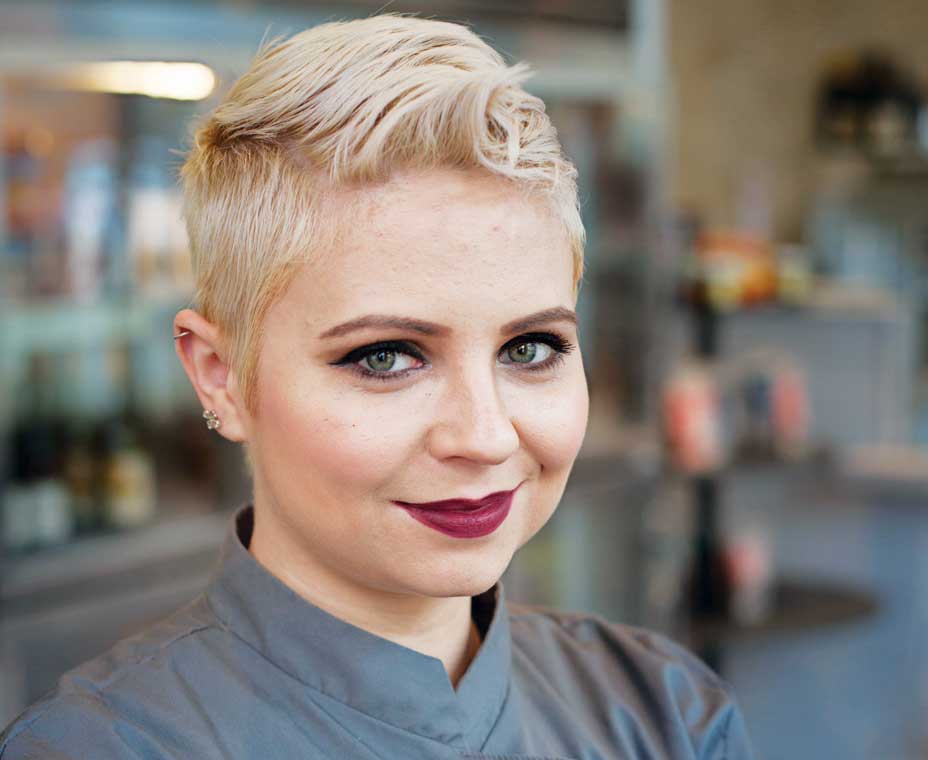More quick-service and fast-casual brands are pursuing clean-label menus, pulling artificial additives, preservatives, and chemicals out of their foods. But some smaller concepts have followed the clean mantra for years. Take Native Foods Café as one example; the vegan fast casual has been dishing clean ingredients for more than 20 years.
Carolyn Corcoran, Native Foods Café’s executive chef, shares her approach to clean vegan eating in a fast-casual environment, as well as her thoughts on where clean eating goes from here.
How would you describe the Native Foods menu?
The Native Foods menu is a perfect blend of traditional vegan comfort foods. A lot of people are looking to eat healthier, especially with all of the big farms and people finding out the hormones going into mass-producing things like chicken, beef, and pork. They look for vegan or plant-based lifestyles to help offset some of that, but they still want those comfort foods that they grew up with.
When I’m eating vegan, I don’t want things like soy or seitan, because if you’re not careful, those can also be highly processed, and the whole point is to try to get the chemicals out of your food. So when I’m working on new menu items, I try to do a nice balance of comfort food and then a lot of fresh vegetables and familiar flavors, but done with a vegan twist.
How hard is it to pull chemicals from fast-casual menu items?
It’s not as hard as you might think. A lot of people ask me how hard it was to switch to being a vegan chef, and I’m like, “If you don’t have butter or milk or these animal byproducts to use, you’re going to have to find a different venue to find the flavor you want with the ingredients you have.” It really isn’t that hard to make the switch. You just need to be resourceful.
What ingredients do you turn to regularly for flavor?
Smoked paprika. I love it, and I think it’s extremely under-used. Smoked paprika isn’t spicy, but it gives you that nice smokiness that you equate with barbecue and grilling. I always add smoked paprika, because it always adds a nice tone to a lot of dishes.
What is your approach to protein, and how do you make it flavorful?
If you want to do quinoa or a bean and rice—or if you want to do chickpeas, because they’re the only thing that’ s a complete protein—all those are very neutral. So you look at those neutral flavors and then you say, “I want them to be Asian-inspired,” or, “I want to have an Indian flair to them.” Then you can just transform them into anything you want; they’re very much a blank canvas. You can take those garbanzo beans and grind them up and make taco meat out of them.
It’s understanding how you can manipulate an ingredient without having to add any additives. And you try to be as creative as possible. When you’re testing a recipe, the last thing you can do is fail. If it didn’t work, you figure out why it didn’t work.
What’s your impression of the quick-serve industry’s move toward clean eating?
I think it’s a good association to health. There is a correlation between how much time a person is willing to spend cooking dinner and the weight gain across the country. As we’ve moved into the mindset of work, work, work, we’re spending less time on dinner, and we’re turning to things that aren’t as healthy. And those are chock-full of preservatives. The more chemicals and preservatives you eat, the more fat that your body will make to protect your organs.
Clean eating is going to be a good way to help your eating habits, because you’re being more conscious. People are looking more at the labels, and a lot of people won’t buy things if there are 10 ingredients on the label, or they won’t buy things if they can’t pronounce an ingredient.
How much does it help brands like Native Foods as larger brands move toward cleaner eating?
The more a product is demanded by the market, the more it’s going to bring the price down. Ten years ago, finding a pomegranate was next to impossible. Now you can find pomegranates anywhere. The more suppliers see a demand for it in the market, the more readily available it’s going to be.
I think clean eating is only going to get bigger. It’s not going to be like the paleo diet, where it’s just a trend. This is here, it’s coming, it’s a new thing—a rejuvenation for the country and the way we all look at eating.

